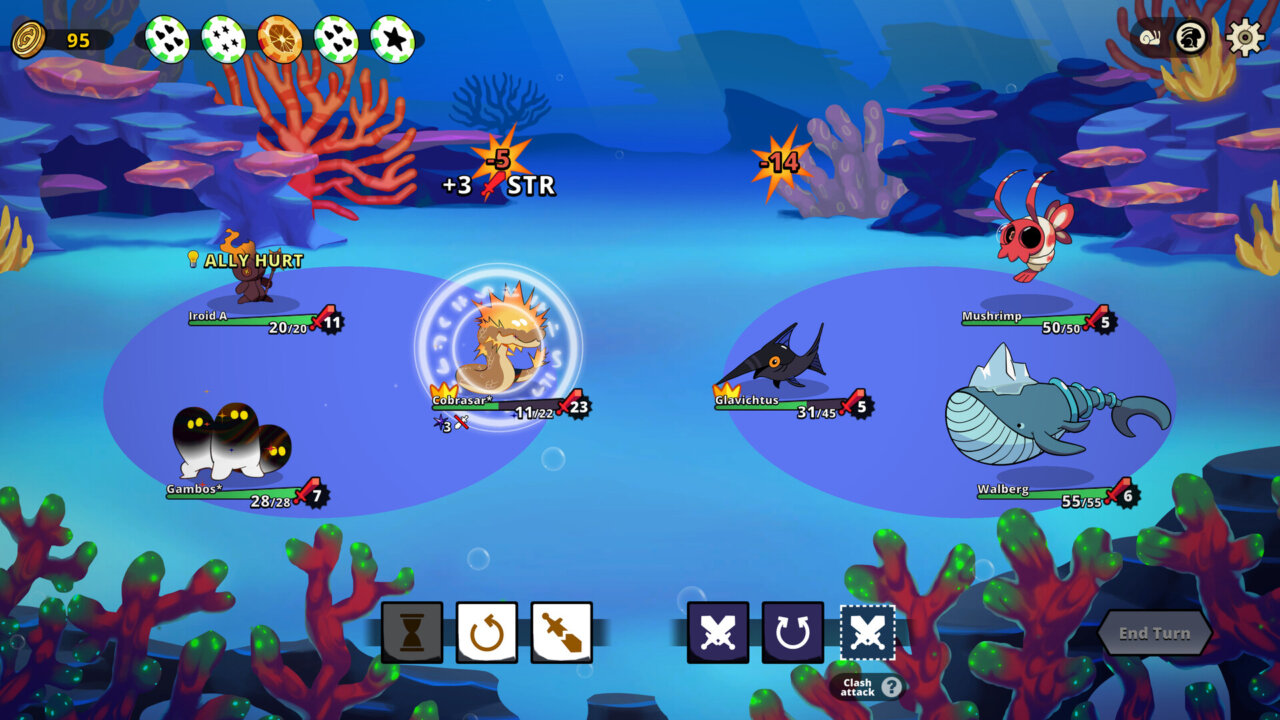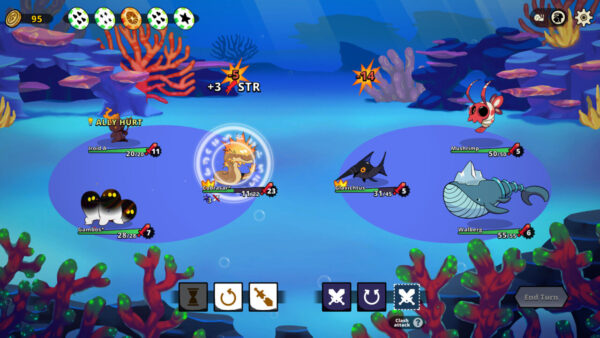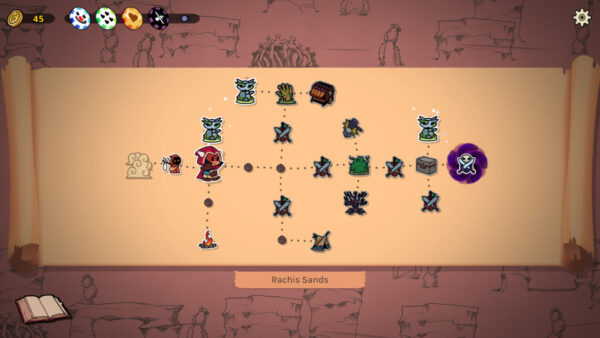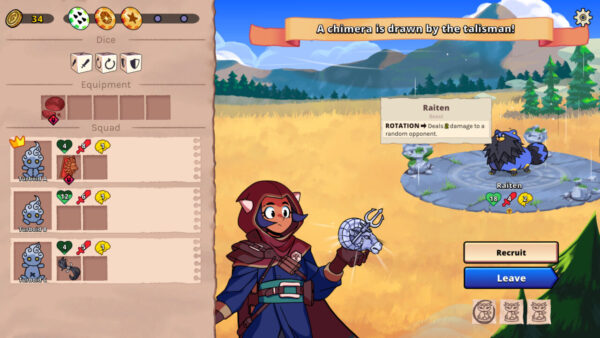Platform: Nintendo Switch
Publisher: Good Shepherd Entertainment
Developer: LEAP Game Studios, Tiny Ghoul
Medium: Digital
Players: 1
Online: No
ESRB: E10+
The neat thing about Dicefolk is the way it defies easy classification, even though it brings together a couple of really well-worn ideas. It’s equal parts roguelike deckbuilder and creature collector with elements of tactical RPGs and dice-rolling games thrown in for good measure…and yet, that description doesn’t really explain anything at all. If anything, it probably raises even more questions.
The obvious question being, of course, “What is it?” And for that, you need to explain how Dicefolk works before anything else.
The two main elements, of course, are the deckbuilding and the creature collecting. In terms of deckbuilding, you start with three dice, each of them with their own sets of moves: some allow you to attack the enemy, some allow you to defend, and some rotate your party around. As you battle your way through the map, you pick up new faces for your dice that allow you to try and optimize your moves.
On top of that, you have the creature collecting: you start the map with three basic, somewhat useless dolls, and the further in you get and the more creatures you unlock, the more varied and interesting and powerful your party gets.
All of this probably sounds pretty standard, I know. But those two elements are just a start – where Dicefolk gets interesting is in how it builds on that basic foundation.
For starters, not only are you controlling your moves, you’re also controlling your enemy’s actions. That may sound simple enough, except you pretty much have to play everything that’s rolled, meaning a lot of the time you’re forced to make tough decisions – who do you want your overpowered enemies to attack on your team? Who can you afford to sacrifice? Do you keep the weakest enemies in front and hope they don’t wear down your health before you get to the tougher opponents, or do you take on the strongest enemies first and hope that you have enough health left over to mop up the weaker enemies.
Further, your opportunities for picking up new creatures are actually pretty limited. You can basically pick up one new creature per floor – it doesn’t matter how many new enemies you face, you’re not gathering them to vary up your party, you’re trying to pick them up at shrines. This ends up meaning that no two playthroughs are alike, since your creatures will usually be quite different from one run to the next.
As you might have gathered from the last two paragraphs, this means that Dicefolk is a little more challenging than the games that inspired it. While you can sort of build up a roster of powerful creatures and strong dice, you really need to grind your way through a lot of tough match-ups to get there. It also doesn’t help that Dicefolk is very sparing in terms of how many goodies it doles out – you don’t get a tonne of gold from victories, items in shops are a little expensive, and the opportunities for revitalizing injured creatures are few and far between – unlike, say, Slay the Spire, where you have lots of opportunities to rest up and regain health, you need to be a lot more strategic about it here.
And if you don’t mind that challenge, then there’s a lot to sink your teeth into here. Every run in Dicefolk brings new adventures, and it’s a sign of how well it’s put together that you’ll definitely want to go on run after run after run.
Good Shepherd Entertainment provided us with a Dicefolk PC code for review purposes.





